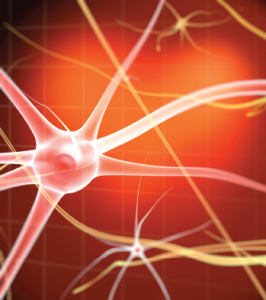
Giovanni Cancemi/shutterstock.com
CHICAGO—Delia Chiaramonte, MD, associate director of education at the Center for Integrative Medicine at the University of Maryland School of Medicine in Baltimore, presented the newest thinking on pain to a gathering of rheumatologists at the ACR’s State-of-the-Art Clinical Symposium in April. She began by explaining that pain is more than nociception. Nociception stimulates nerves to send information to the brain, and pain is the subjective perception of that information. As such, it is affected by emotions, genetics and social connections.
The central nervous system (CNS) can change, distort and amplify pain such that the symptoms no longer directly reflect the peripheral noxious stimuli. This central sensitization amplifies neural signaling and elicits pain hypersensitivity. “The CNS is distorting how much pain there is,” explained Dr. Chiaramonte, adding that this phenomenon may underlie fibromyalgia.
“It turns out that there are signals from the brain that amplify pain,” she noted. The brain receives a sensation and then “decides” if it is hurt. Moreover, the greater the perception of threat, the greater the pain. Thus, people who are anxious and feel threatened throughout the day feel more pain. Likewise, “patients who catastrophize have more pain,” added Dr. Chiaramonte. “That is so important for us to know, because we can teach people to stop catastrophizing.”
Experts consider patients who catastrophize pain to have a maladaptive cognition. Other maladaptive cognitions that contribute to an enhanced experience of pain include fear of pain, hypervigilance and kinesiophobia. These cognitions can combine with pain enhancers that include muscle tension, anxiety/depression and self-blame/guilt. The integrative approach to pain management addresses all of these components of the pain response. It can include, for example, cognitive behavioral therapy, medications and acupuncture. A key concept in integrative pain management is the mind–body connection.
‘Patients who catastrophize have more pain,’ added Dr. Chiaramonte. ‘That is so important for us to know, because we can teach people to stop catastrophizing.’
Mind–Body Techniques
Mind–body techniques help with pain management because they can aid in the management of anxiety and the sensation of threat. These techniques, such as meditation, guided imagery and biofeedback, are designed to stimulate the relaxation effect. “The one that’s best is the one that the patient likes and the one that the patient will do,” said Dr. Chiaramonte.
She described in some detail one standardized program developed to reduce the suffering of people in chronic pain: mindfulness-based stress reduction (MBSR). The eight-week group experience requires patients to perform 45 minutes a day of meditation at home. Those who did so experienced increased pain tolerance and lowered pain/distress. They also had decreased pain intensity, reduced emotional distress and improved sleep quality relative to patients in the placebo group. The effect of MBSR is not only the subjective report of patients, but also can be seen objectively by imaging with functional magnetic resonance imaging (fMRI).



